From films, books, video games, the internet. By now we are all familiar with the Crusades or The Wars to Reclaim the Holy Land, in one way or another. The Crusades were a series of Holy Wars involving at least three major religious factions, the Catholic kingdoms, Orthodox Christianity, the Islamic caliphates and dynasties. Because of its religious factor, discussing the Crusades has become a very sensitive matter, and is nearly impossible to get a straight and honest opinion from mainstream sources. It has suffered misconceptions, historical revisions, biased views, extreme romanticism, and political correctness. Personally, I have always been fascinated with Crusade history mainly because it involves religion and military history, two other things that I find interesting and constantly read about. Unfortunately the Crusades have been terribly and dishonestly associated with ignorance, bigotry, xenophobia, malevolent fanaticism brought about by religion.
And because the subject is of a delicate nature it is susceptible to everyone, religious or not. For this reason, let's keep the thread strictly on the topic. And if there has to be criticism or corrections, make it constructive as possible and remember this thread is purely for historical purposes AND WILL BE CONSTANTLY UPDATED. Hopefully.
To start lets get to know the key factors and 'players' prior to the early days of the Crusades.
CALIPHATES
After the death of Muhammad the prophet (632 AD), Muslims lived in a system of government called a caliphate under the rightly guided caliphs 'earthly' representatives of Muhammad. Around this time, the caliphates were well-known for their innovations and contributions in the field of science, in mathematics, medicine and astronomy which they studied and developed; from the Grecian peoples, Indians, and Chinese knowledge acquired due to the vast extent of their empire stretching from the Iberian peninsula (Spain) North Africa to Asia.It is said they were more advanced than the Europeans this period in history.
NOTE: The early Islamic conquest towards Europe from Spain was halted in France during the Battle of Tours 732 AD. One of the earliest Christian and Muslim battle. It is considered by many historians as huge turning point in history. Supposedly keeping the Western world (Europe) from turning Muslim. Links: 15 Decisive Battles Medieval Sourcebook, Three Accounts of the Battle of Tours
Phases of the Moon by Al-Biruni from Kitab al-Tafim.
Listing 584 species of plants and instructions regarding cultivation and use. (Grafting, against pests, and perfume extractions. Botany.)
Islamic astronomers celestial positioning.
Muslim astronomers and scholars inside an observatory.
Who says being religious and scientific at the same time is incompatible?
The caliphate, particularly this time were the Abbasids (name from Abbas, Muhammad's uncle) Abbasid Caliphate 750-1258AD. Renowned for being an enlightened, intellectual governors of the Islamic world. They were known to be very tolerant and a curious lot. They welcomed arts, and sciences brought about by foreigners and accepted them in their courts regardless of their race or religious backgrounds. Their cities in Egypt, Persia, Baghdad, in the Middle East were filled with people from all walks of life, from traders, poets, desert tribesmen, servants of royalties, and religious pilgrims from different corners of the medieval world.
Intellectual approach to religion. ie. Islamic theology, apologetics.
But the Abbasids, like the previous and much earlier caliphates declined in influence and power due to internal weaknesses and infighting bringing crumbling political unity. This slow decline gave rise to another caliphate the Fatimid from the name, Fatimah (Muhammad's daughter). Setting its empire in Cairo, Egypt.
SELJUK TURKS
The Abbasids core city in Baghdad ultimately fell under the control of a warrior tribe known as the Seljuk Turks. Ironically the Seljuk were mercenaries of the Abbasids but had become too powerful and took advantage of the situation. In 1055, they begin ruling above the caliphs as they liked. The tolerant Abbasids were now under the control of a strikingly opposite type of people. The Seljuks combined their militaristic rule with their newly accepted religion thus rendering a fanatical zeal.
Seljuk Turks. Note: Asiatic-type armor.
THE HOLY LAND
The Muslim governors were enlightened rulers and had openly allowed Christian pilgrims to visit their holy sites in Palestine and in Jerusalem. But the arrival of the Seljuk Turks from the steepes of Asia though were recent converts to Islam and the captors of the caliph of Baghdad changed all that. These Turks acted rudely and are said to be brigandly people. While they were hard towards their fellow Muslims who they displaced, they were extra inconsiderate towards Christians.
By 1071 the Turks defeated the Byzantine army near Manzikert (Modern day Turkey) and captured Jerusalem. The Byzantines who were Orthodox Christians, later on reeling from the Turkish aggression called for assistance from the pope.
- In 1073 the Byzantine emperor called for assistance from the pope. Letters were exchanged on the subject and the Pope seriously contemplated leading a force of 50,000 men to the East in order to re-establish Christian unity, repulse the Turks and rescue the Holy Sepulchre.
Byzantines meeting the Turkish onslaught.
- In 1091 Diogenes, the Byzantine emperor, was defeated and made captive at Manzikert a disastrous defeat for the Byzantines. Asia Minor and all of Syria also fell under the control of the Turks, and Antioch succumbed in 1084. By 1092 the entire region was controlled by them and Jerusalem was almost unreachable for Pilgrims.
- Alexius, the new Byzantine emperor wrote to pope Urban II in 1095 and requested assistance in the defence of Christendom against the terrible Turks. Alexius sought to enrol five hundred Flemish knights in the imperial army which was still recovering from its momentous defeat of 1091. When he asked for those 500 knights little could he have imagined that within eighteen months 120,000 – 150,000 knights, soldiers, women and children would answer his plea for help...
As a reaction to the Turkish aggression and denial of entry of the Holy Land Pope Urban II calls for a Crusade.
Read Pope Urban II's speech that launched the Crusades -> Speech at Clermont by Pope Urban II
...First Crusades has began.
First Crusade (1095–1099)
Mission
· Defend Eastern Christians from Muslim aggression.
· Make pilgrimages to Jerusalem safer.
· Redirect knights’ aggression.
· Recapture the Holy Sepulcher.
The Turks were a ruder people than the Arabs whom they displaced, and in their fanatic zeal for Islam were not inclined to treat the Christians with consideration. Many tales floated back to Europe of the outrages committed on the pilgrims and on the sacred shrines venerated by all Christendom. Such stories, which lost nothing in the telling, aroused a storm of indignation throughout Europe and awakened the desire to rescue the Holy Land from the grasp of the "infidel."
Christian pilgrims travelled treacherous routes but usually marched in numbers to protect themselves from highwaymen, bandits, even wild animals. By the 11th century the Turkish behavior made pilgrimage much worse. Though negotiations were made, continuous abuse and ferocious acts forced the Christians to seek other methods of protection such as employing knights within their ranks.
One such organization was created to serve this purpose, they were called Poor Fellow-Soldiers of Christ and of the Temple of Solomon or famously known as the Knights Templar.
The Templars were no ordinary Crusaders, consider them as a medieval equivalent of any special forces you can think of. They were a military order that had a very strict discipline and syncretic routine of religious and militaristic exercises (Warrior-Monks). They practiced self-mortification, fasting, prayer, and a constant attendance at matins (monastic nighttime liturgy, ending at dawn, of the canonical hours), vespers (sunset evening prayer) and other services of the Church. They were not allowed to receive letters from their parents, relations, or friends without the license of the master.
- Knight Brothers would don a haubergeon, a coat of padded fabric, over their clothing. Over this would go a hauberk of mail with a mail coif, or hood, attached. Mail chausses (leggings) protected the legs. A white surcoat, adorned with the red Templar cross, would be worn over the armour. In the early 1100’s, a Knights head was protected by a conical metal helmet with nasal bar - later, the entire head would be enclosed in a full or ‘bucket helm’.
- The weapons of the Templars were the same as ordinary Knights elsewhere. Each Brother would own a double-edged broadsword, a lance of ash wood some 13 feet (4 metres) long and a kite or triangular shield. Personal adornment of armor, weapons and horse harness was strictly forbidden. Templar Knight’s would typically be given more than one destrier (warhorse) to ride. They would also have a palfroi (riding horse) and several roncin (packhorses or mules.)
- Templar Knights would form up in an eschielle or squadron prior to battle. Warriors were not allowed to join other units. They would often sing psalms before charging into battle. Their most effective tactic was a furious mounted charge - contemporary eyewitnesses, both Muslim and Christian, were impressed and terrified by the fearsome Templar charge.
Guiot de Provins, a 13th century French poet, wrote;
‘The Templars are most doughty men . . . It is the Order of Knighthood. They are in great honour in Syria; the Turks fear them greatly, they are like a castle or wall against them; they will never flee in battle.’
- The vows of a Templar Knights included the following:
+ To speak sparingly and to wear a grave and serious deportment.
+To be constant in the exercise of charity and almsgiving, to have a watchful care over all sick brethren, and to support and sustain all old men.
+ To receive no service nor attendance from a woman and to shun feminine kisses.
NOTE: Bulletins are taken from different sources.
The Templars followed these basic vows: Poverty, chastity, obedience, and piety.
NEXT: The Retaking of Jerusalem from the Turks...
Results 1 to 10 of 40
-
07-14-2012, 03:31 AM #1Banned User

- Join Date
- May 2012
- Gender

- Posts
- 1,464
 The Medieval Crusades 1095-1291 - Events, Life, Society, Warfare, Innovations
The Medieval Crusades 1095-1291 - Events, Life, Society, Warfare, Innovations
Last edited by machinecult; 07-15-2012 at 10:08 AM.
-
07-14-2012, 05:33 AM #2
 Re: The Medieval Crusades 1095-1291 - Events, Life, Society, Warfare, Innovations
Re: The Medieval Crusades 1095-1291 - Events, Life, Society, Warfare, Innovations
ah.. The good old days, where the way of the sword is popular, and survival of the fittest is the best rule, and using out most of your skills and knowledge just to survive.. wew..
-
07-14-2012, 12:24 PM #3
 Re: The Medieval Crusades 1095-1291 - Events, Life, Society, Warfare, Innovations
Re: The Medieval Crusades 1095-1291 - Events, Life, Society, Warfare, Innovations
only the strong lives! nice thread
-
07-14-2012, 12:30 PM #4
 Re: The Medieval Crusades 1095-1291 - Events, Life, Society, Warfare, Innovations
Re: The Medieval Crusades 1095-1291 - Events, Life, Society, Warfare, Innovations
the muslims then was so advance.. unlike now that they kinda backwards.. it alls started with the "Islamic Fundamentalism"
The Tradition:
The boogeyman that replaced the specter of communism in the hearts of terrified Westerners, Islamic fundamentalism seems to come from another time. They rage against science, Western ideals and the basic rights of women. That's why you hear people on Fox News claiming that Muslim world is stuck in the Dark Ages...
...bla bla bla.. read more here @article 4 malingaw mo. 6 Supposedly Ancient Traditions (That Totally Aren't) | Cracked.com
-
07-14-2012, 06:27 PM #5
 Re: The Medieval Crusades 1095-1291 - Events, Life, Society, Warfare, Innovations
Re: The Medieval Crusades 1095-1291 - Events, Life, Society, Warfare, Innovations
That happens because of this so-called Islamic reformer in the name Of Muhammad bin Abdul Wahhab who interpret Islamic Jurisprudence as already closed that at any rate in this modern and changing world, Islamic world is as like an old sick man. Those who follow his line of thinking are open for Islamic Fundamentalism and those who against them are called infidels
 . Sad to say his Islamic thoughts were embraced and exploited by those so-called Muslims and Islamic countries whose form of government are Autocratic.
. Sad to say his Islamic thoughts were embraced and exploited by those so-called Muslims and Islamic countries whose form of government are Autocratic.
Share lang nako ni ang some of the Contributions of the Muslims in the Golden Age....
Muslim Scientists, Scholars, Polymaths and Renaissance Men: Islam Exposed - YouTube
-
07-14-2012, 06:35 PM #6Banned User

- Join Date
- May 2012
- Gender

- Posts
- 1,464
 Re: The Medieval Crusades 1095-1291 - Events, Life, Society, Warfare, Innovations
Re: The Medieval Crusades 1095-1291 - Events, Life, Society, Warfare, Innovations
Strange how that went. They seem to have the best doctors, scientists in the Middle Ages.
Here's one funny incident (if you have a wicked sense of humor) about a Frankish physician from the account of Usama Ibn-Minqidh, a famous Islamic historian, poet and veteran of the Crusades. (He is the character inspired in the movie, 13th Warrior.)
Source: Medieval Sourcebook: Usmah Ibn Munqidh (1095-118The lord of al-Munaytirah wrote to my uncle asking him to dispatch a physician to treat certain sick persons among his people. My uncle sent him a Christian physician named Thabit. Thabit was absent but ten days when be returned. So we said to him, "How quickly has thou healed thy patients!" He said:
They brought before me a knight in whose leg an abscess had grown; and a woman afflicted with imbecility. To the knight I applied a small poultice until the abscess opened and became well; and the woman I put on diet and made her humor wet. Then a Frankish physician came to them and said, "This man knows nothing about treating them." He then said to the knight, "Which wouldst thou prefer, living with one leg or dying with two?" The latter replied, "Living with one leg." The physician said, "Bring me a strong knight and a sharp ax." A knight came with the ax. And I was standing by. Then the physician laid the leg of the patient on a block of wood and bade the knight strike his leg with the ax and chop it off at one blow. Accordingly he struck it-while I was looking on-one blow, but the leg was not severed. He dealt another blow, upon which the marrow of the leg flowed out and the patient died on the spot.
He then examined the woman and said, "This is a woman in whose head there is a devil which has possessed her. Shave off her hair." Accordingly they shaved it off and the woman began once more to cat their ordinary diet-garlic and mustard. Her imbecility took a turn for the worse. The physician then said, "The devil has penetrated through her head." He therefore took a razor, made a deep cruciform incision on it, peeled off the skin at the middle of the incision until the bone of the skull was exposed and rubbed it with salt. The woman also expired instantly. Thereupon I asked them whether my services were needed any longer, and when they replied in the negative I returned home, having learned of their medicine what I knew not before. : Autobiography, excerpts
: Autobiography, excerpts
In technology most historians agree that the Caliphate Muslims were advanced, even in war the earlier Europeans wore simpler armor (except for the Byzantines) while the Muslims donned complex ones that were adaptable in the desert - hot daytime and cold nighttime temperature.
Some examples of those elaborate Muslim armor. They usually wore them underneath clothing.
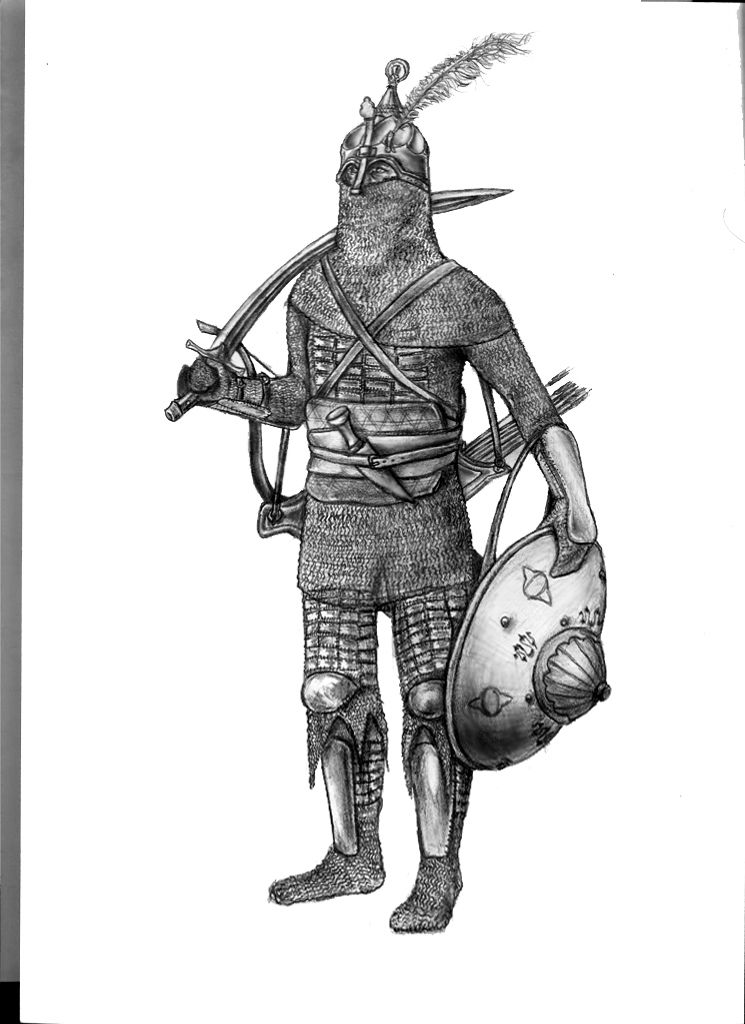
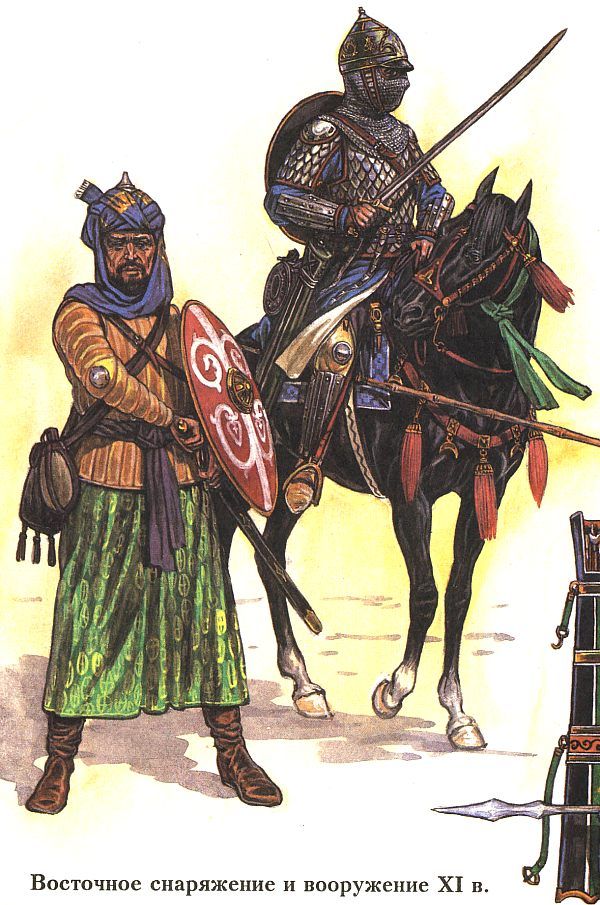
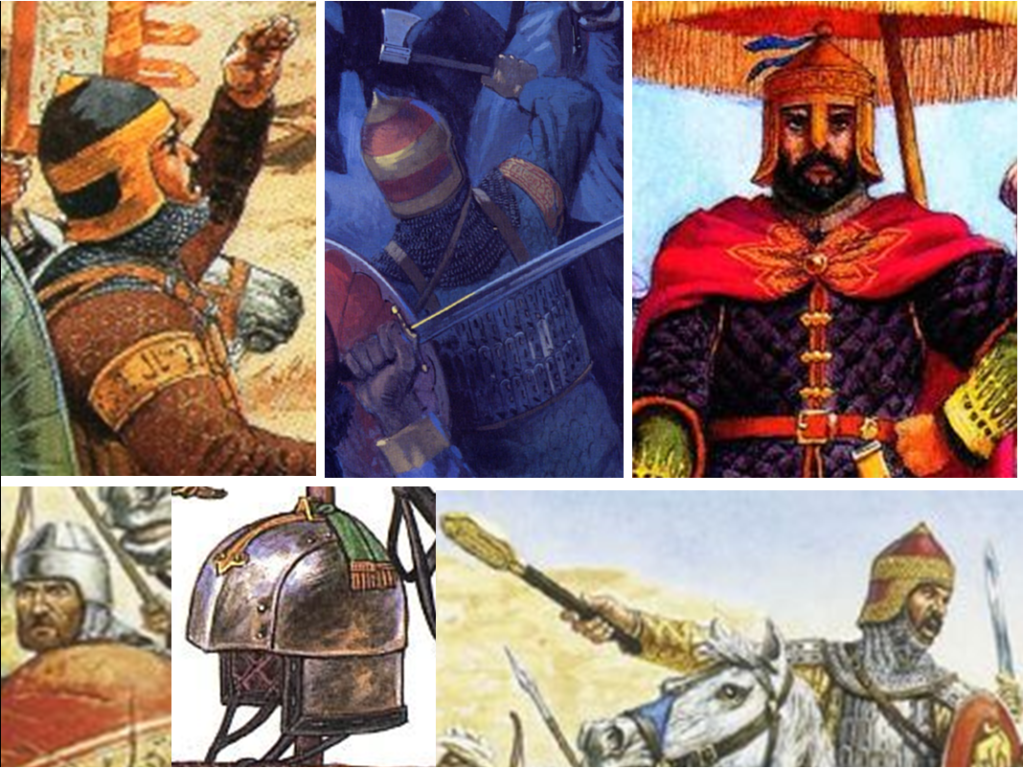
Persian plate mail.
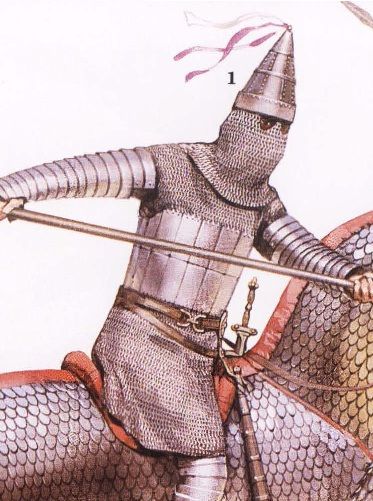
11th Century Franks (French). They practically wore the same during the early days of the Crusades they later adopted the tunic to protect the mail and themselves from Sun and sand.
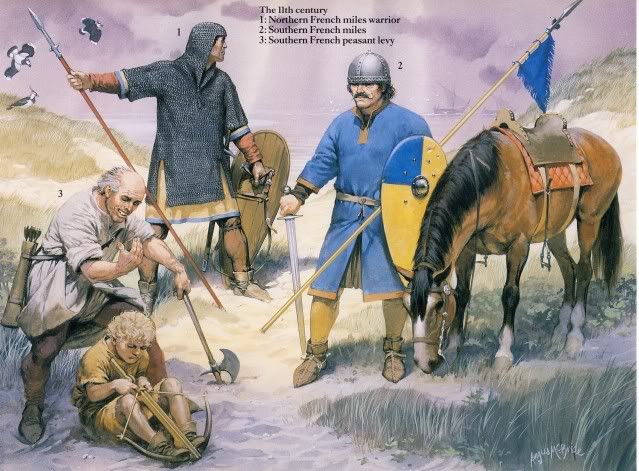
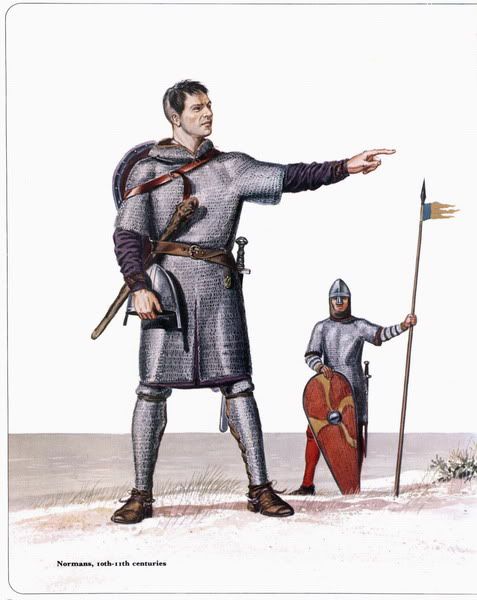
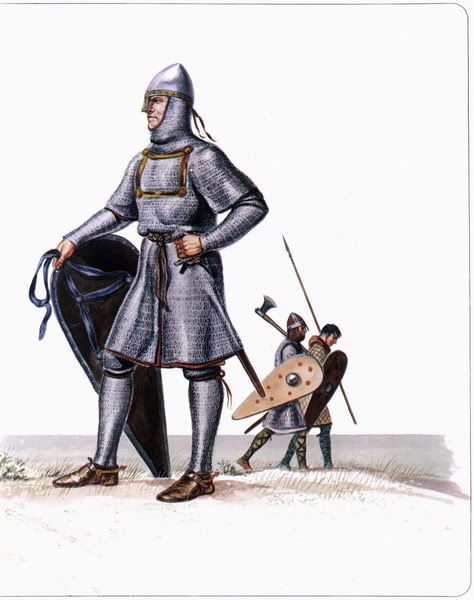
11c. Norman Knight
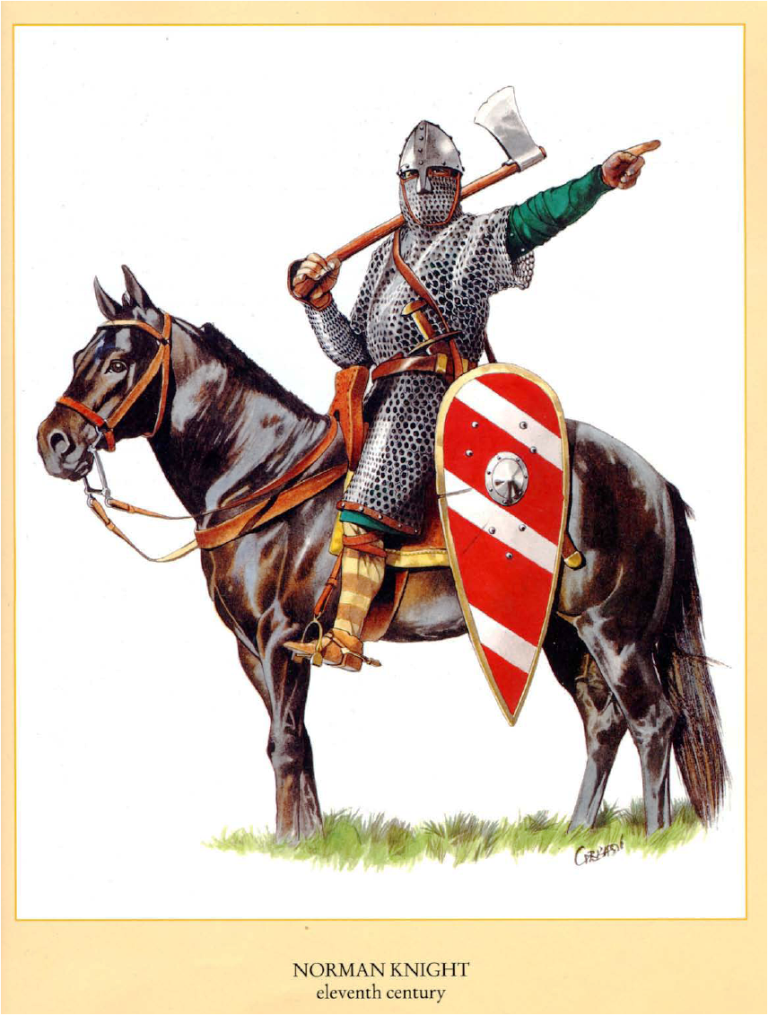
Byzantines (or Eastern Romans) were alot more 'covered'. The rest of Europe would soon follow this trend.

Byzantine calvary, Cataphract were feared in the earlier years.
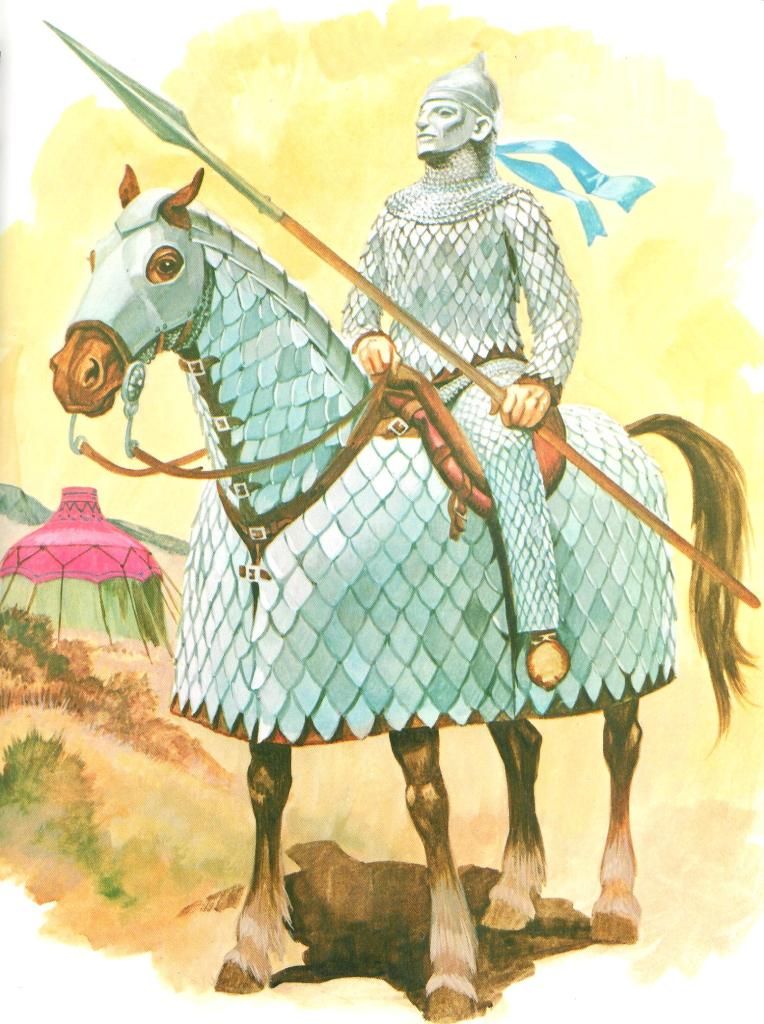
In the Battle of Tours the Franks had no horses, they were basically infantry and little or no armor. So they had to strategize countering the dreaded Muslim cavalry by fighting in a wooded and hilly areas where the horses cannot charge.
8th century Frank armor.
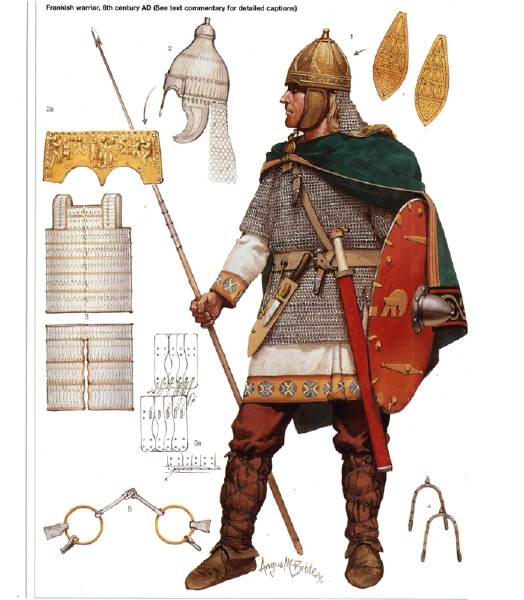
In a nutshell the Europeans were adapting their technology and sciences while they were somewhat abandoning them. The Muslims also suffered terribly from infighting.Last edited by machinecult; 07-15-2012 at 10:15 AM.
-
07-14-2012, 06:47 PM #7Junior Member

- Join Date
- Jun 2012
- Gender

- Posts
- 91
-
07-14-2012, 06:51 PM #8
-
07-14-2012, 06:59 PM #9Junior Member

- Join Date
- Jun 2012
- Gender

- Posts
- 91
-
07-14-2012, 07:06 PM #10
 Re: The Medieval Crusades 1095-1291 - Events, Life, Society, Warfare, Innovations
Re: The Medieval Crusades 1095-1291 - Events, Life, Society, Warfare, Innovations
Ayaw lagi pag-insist sa imo pagka-ignorante dong oi, ug gusto ka matagbaw sa imong kalagot ayaw ug sigi ug PM nako ha! Aria lang mi sa Masjid Al-Khairiah-Mambaling every Friday afternoon we'll set time for you to discuss matter anything under the sun para matagbaw ka! Sorry sa TS, this will be my last reply to you dong Aphiemi.
Advertisement
Similar Threads |
|




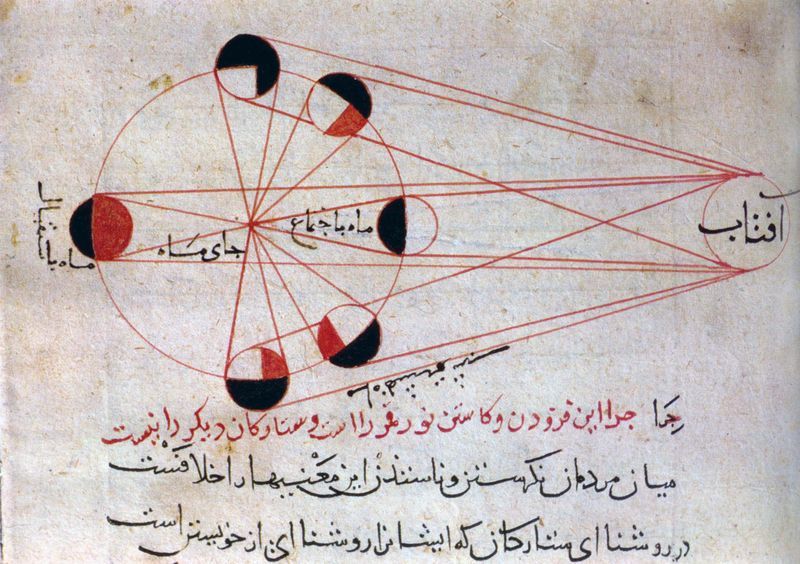
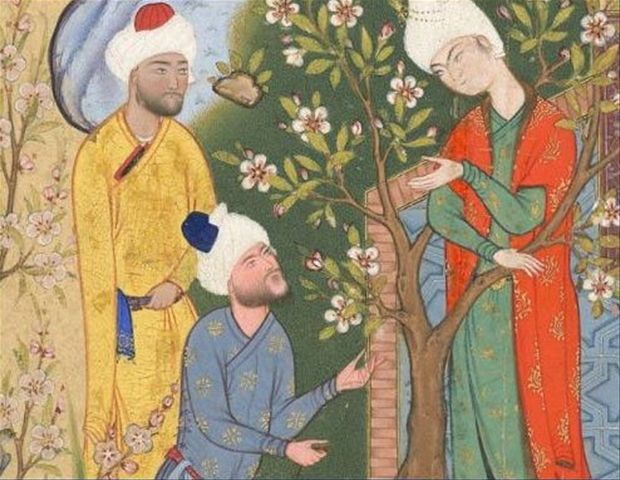
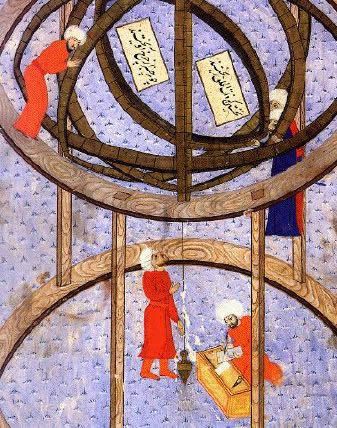
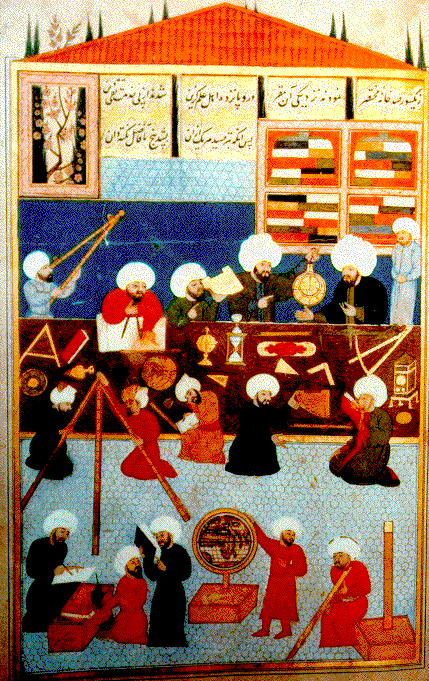
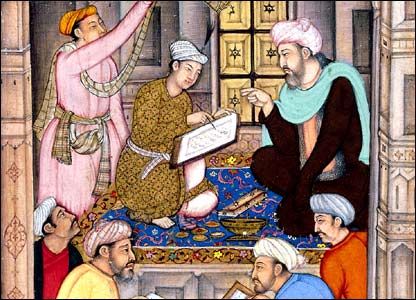
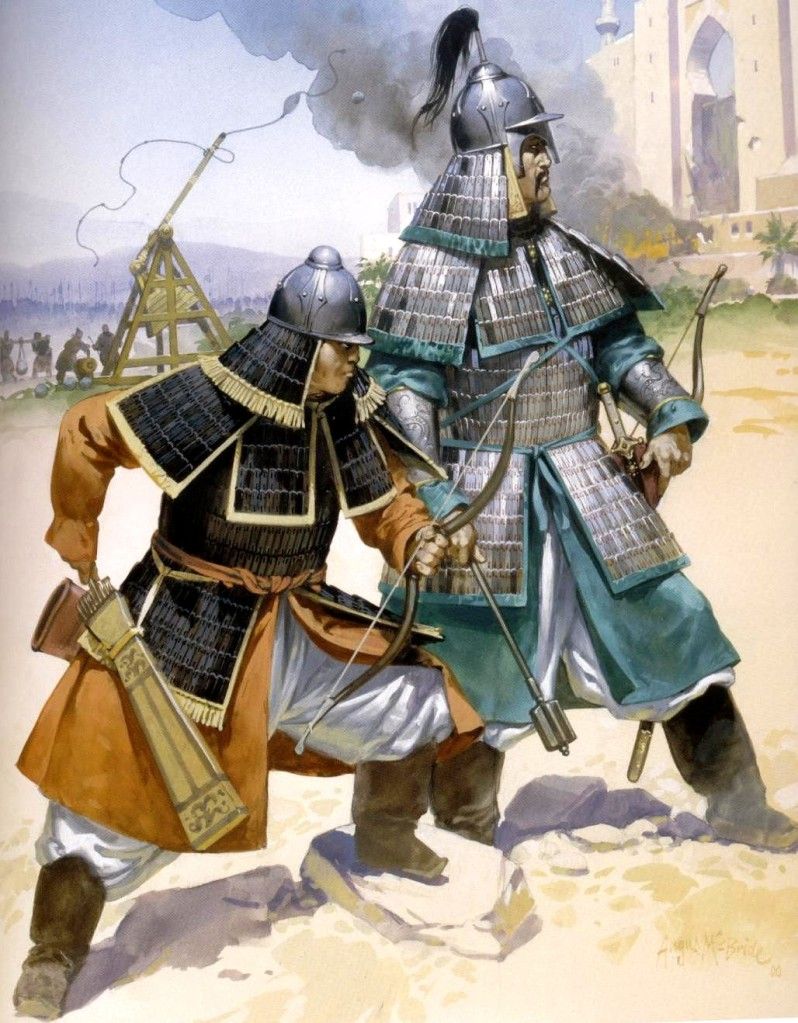
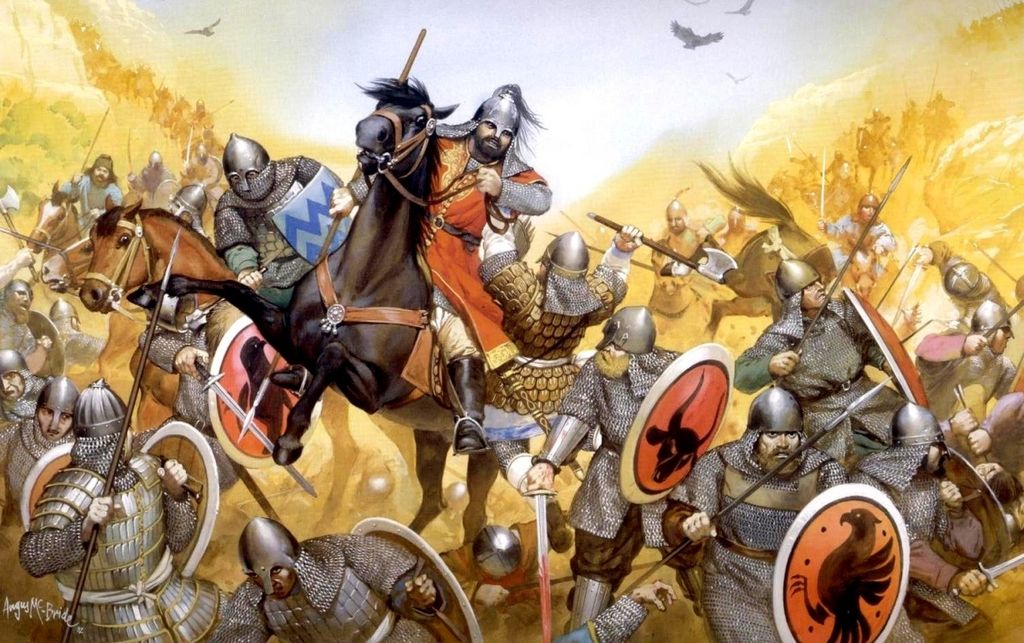
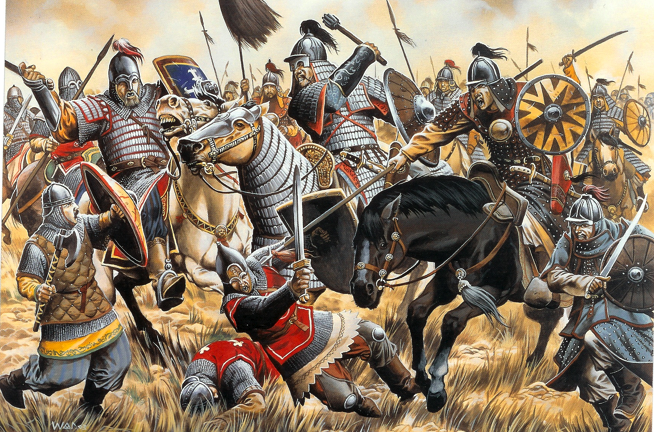
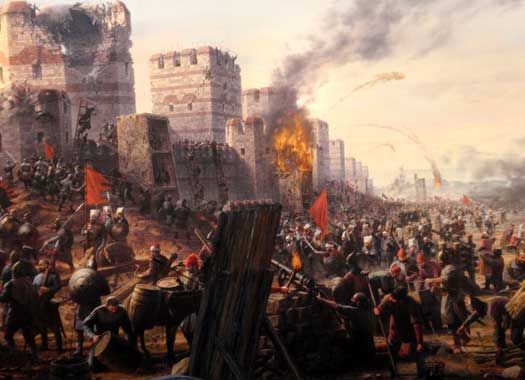
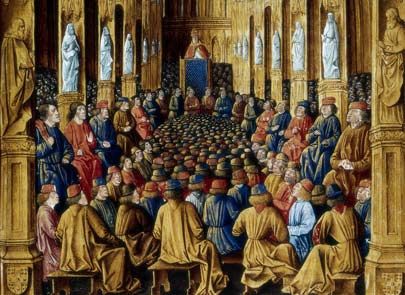
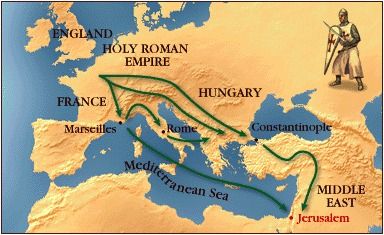

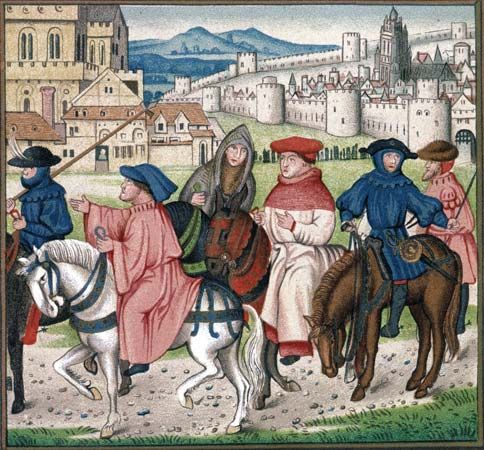
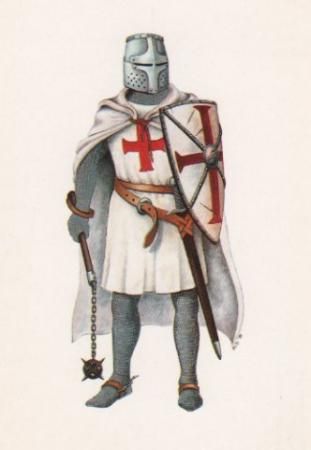
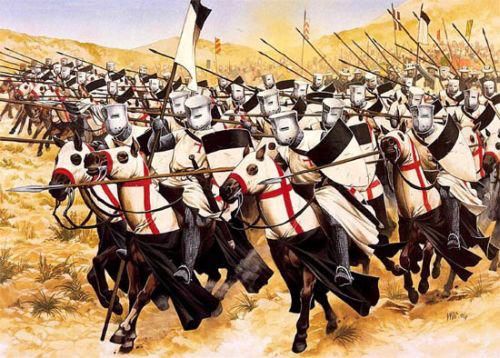

 Reply With Quote
Reply With Quote

